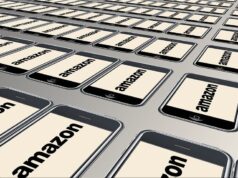Mergers and Acquisitions play a key role in a company’s growth. Especially in the case of a Technology company, it is the business collaborations that help them gain an edge over their competitors. In addition to that, some acquisitions would make a company buy out their competitors. If you have been involved in the tech industry, you will know the repercussions of an acquisition. However, this list doesn’t entail that. But, would give you a gist on the biggest acquisitions made to date. Did you know, the biggest acquisition was valued at $67 billion?
1. Microsoft buys Skype
If you wonder why Skype comes preinstalled in your Windows platform, then it is due to this 2011 deal. Offering instant messaging and free voice IP services, Skype was owned by eBay in 2005. But, the deal didn’t hold for too long, as the company decided to sell it off to private investors at a 40% loss. In 2011, however, Microsoft bought Skype for $8.5 billion. It has been 9 nine years, and the deal is still going strong!
2. Hewlett – Packard buys Autonomy
This is one of the two HP’s acquisitions to be featured on this list. In a deal worth $10.24 billion, HP opened up its enterprise solution by buying a major share of Autonomy. However, a year later, HP found an accounting scandal in this British based company. Subsequently, the CEO of Autonomy was fired following the company’s inefficiency in reaching its target revenue.
3. Google buys Motorola Mobility
Back in 2011, Google bought Motorola Mobility for a whopping $12.5 billion. The acquisition was in response to Apple Inc’s success in the smartphone market. Since Google saw potential in this market, it acquired Motorola to develop its own product line. However, in less than 3 years, Google sold Motorola to Lenovo. According to the reports, all of the 2000 patents were sold for only $2.91 billion.
4. Amazon buys Whole Foods
Perhaps the most surprising bet in 2017, Amazon bought a share in Whole Foods, a grocery chain based out of the United States. As per reports, the deal was finalized for $13.7 billion. If you are wondering what an e-commerce giant is doing with a grocery chain. Then, you should see the growth of Amazon. Recently, they have diversified their business. Out of their many businesses, AmazonFresh is a delivery service platform set up by Amazon. Using this service, you can buy groceries online through a “click-and-collect” model.
5. Walmart buys Flipkart
While Amazon was tapping into the grocery space, Walmart was taking its bet on one of its competitors. The retail chain bought India’s largest e-commerce company, Flipkart for $16 billion. In addition, Walmart’s 77% stake would mean that they would help Flipkart compete directly with Amazon India. If you run a company, you will know how wise this decision from Walmart was! It was also Walmart that promised Flipkart to make them public.
6. Broadcom Buys CA Technologies
Before the 2018 acquisition, Broadcom were the leaders in semiconductor and was experimenting with Information Technology services. The $18.5 billion deal with the American Information Technology Management Software and Solution provider, CA Technologies would make them equally good in IT services. In addition to that, this deal would help Broadcom to meet the widespread demand for infrastructure software solutions.
7. Facebook Buys WhatsApp
If Facebook’s Instagram acquisition surprised you, then its WhatsApp acquisition would have taken you aback. On a deal worth $19 billion, Facebook’s alliance with WhatsApp would give them access to 450 million users. However, the Zuckerberg-led company is yet to monetize WhatsApp. Perhaps, they should learn from Tencent and WeChat! But, the deal only affected the growth of WhatsApp. Shortly after the acquisition was finalized, one of its competitors, Telegram had an upsurge of 1 million users. But, somehow, WhatsApp bounced back and has around 1.5 billion users. Imagine, if Facebook manages to monetize the platform, they would have 1.5 billion potential customers. That’s the power of mergers and acquisitions!
8. Hewlett-Packard buys Compaq
Going into the twenty-first century, IBM was leading the market in computing systems. As a matter of fact, only a few companies went head-to-head with them. However, to get into the wagon, Hewlett-Packard(HP) bought Compaq for a $25 billion deal in 2001. Perhaps the biggest one at that time! This deal would give HP an opportunity to compete against IBM. However, over time HP started discontinuing some of Compaq’s brand. In 2013, it was announced that HP would no longer have Compaq for its lower-end systems.
9. Microsoft Buys LinkedIn
In 2016, Microsoft bought the “Facebook for professionals”, LinkedIn for $26.2 billion. At the time of the acquisition, the business-oriented social networking platform had around 400 million users. Shortly after the deal, LinkedIn’s share saw an upsurge of 47%, while Microsoft’s share went down by 3.2%. But, the deal would give Microsoft an opportunity to make LinkedIn more effective by prudently using the data. Despite the deal, Microsoft would have Jeff Weiner to remain as a CEO. He would report to Satya Nadella, CEO of Microsoft.
10. IBM buys Red Hat
IBM had plans to acquire Red Hat, but it didn’t materialize until 2018. When the deal was made public, market participants were surprised to see IBM buy Red Hat for $34 billion. Because Red Hat was only valued at $20.5 billion in 2018. However, beyond the price, this deal would open a door of new opportunities for IBM. Over the next years, IBM would see a huge restructuring in its open-source and cloud offerings. That’s not all, the deal would also start a set of huge mergers between the conventional tech vendors and cloud-native
11. CenturyLink buys Level 3 Communications
On another $34 billion deal, America’s top telecommunications company, CenturyLink bought a telecom and internet service provider Level 3 Communications. Ironically, CenturyLink was the third-largest telecommunications provider at the time of the deal. The deal was complete in 2017 and would have Level 3 to be entirely associated with CenturyLink. On the other hand, this would give CenturyLink enough goods to compete against Verizon and AT&T. In fact, after the deal, CenturyLink will connect more than 350 metropolitan areas with its fiber-enabled, on-net building.
12. Dell buys EMC
It has been 5 years since the Dell-EMC deal, yet no other company had topped the $67 billion mark in the acquisition. In 2015, Dell made a huge announcement that they are planning on buying EMC at a price of $33.15 per share. Amassing a total of $67 billion, this deal would help Dell, a leader in personal computer devices, tap into EMC’s enterprise storage business. In a way, it was Dell’s response to IBM and HP’s private cloud computing services.










